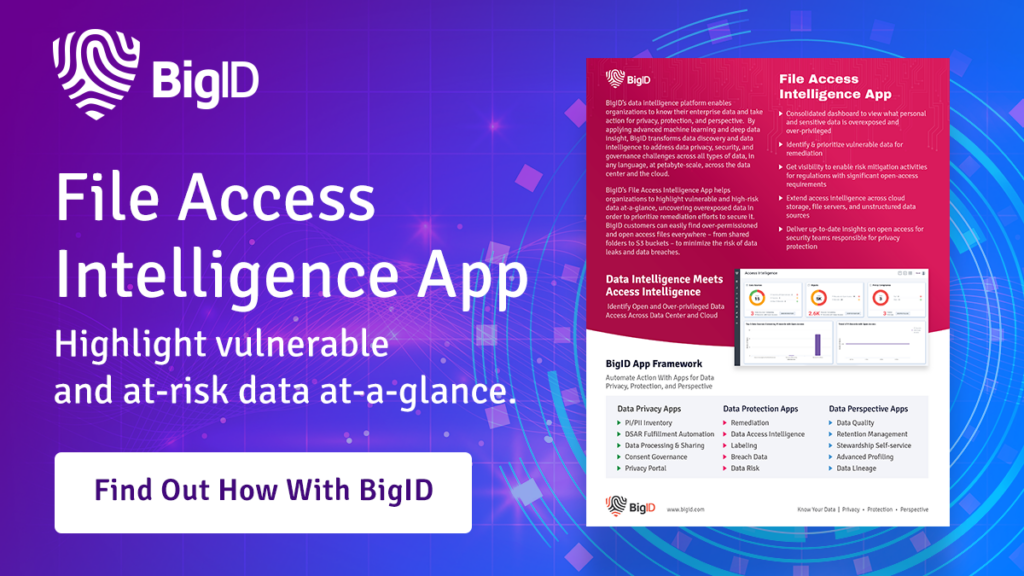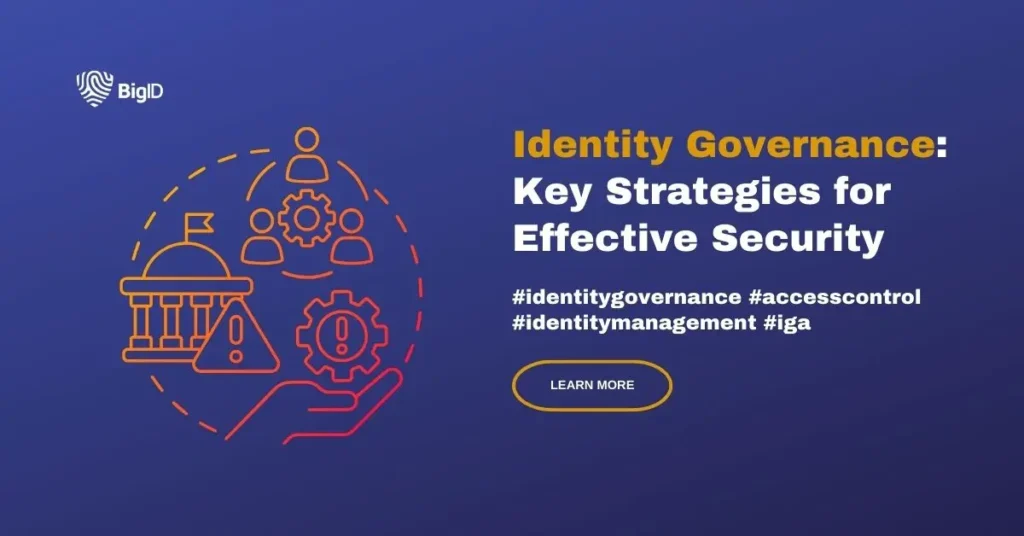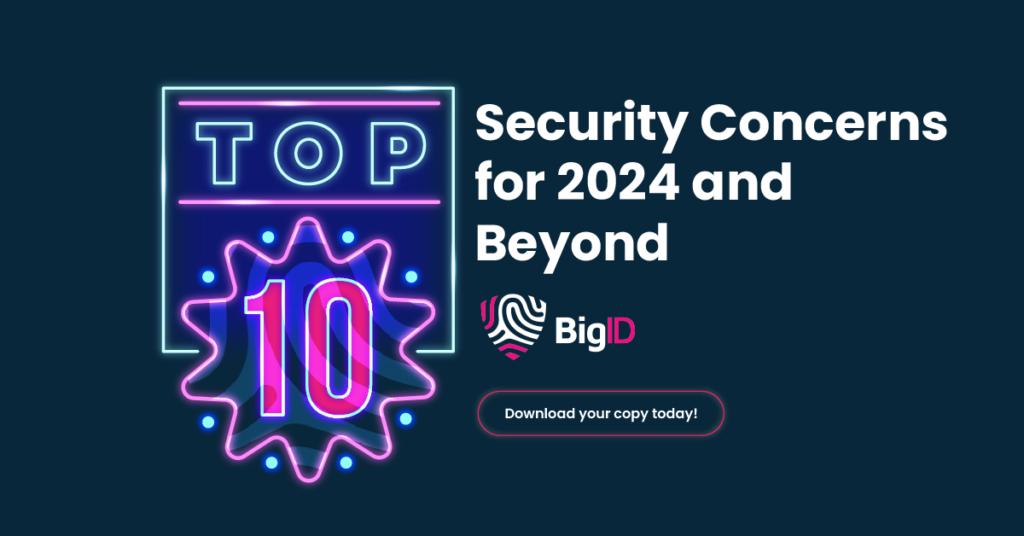Identity Governance and Administration: What Is IGA?
In today’s digital world, protecting data and preventing unauthorized access is crucial for organizations. Implementing strong identity governance and administration (IGA) practices is essential.
Businesses need them to manage users’ digital identities and access privileges effectively to safeguard sensitive information and maintain a strong security system, ensuring users have the right access.
By integrating policies, processes, and technologies, IGA helps organizations efficiently govern users, simplify access management, and ensure compliance—strengthening their defences against evolving cyber risks.
What is Identity Governance and Administration?
IGA is the active process of managing and controlling user profiles within an organization. It involves establishing policies, procedures, and technologies to ensure that the right individuals access resources and information appropriately. This proactive approach helps maintain the organization’s security, compliance, and overall data integrity.
Why Do You Need Identity Governance?
Modern identity governance is crucial in today’s data landscape due to several reasons:
- Security: With the increasing number of data breaches and cyber threats, organizations must ensure that only authorized individuals can access sensitive information. Proper governance helps establish strong controls and authentication mechanisms for entitlement management, minimizing the risk of unauthorized access and potential data leaks through automation and reducing manual processes.
- Compliance: Organizations must comply with various regulations and standards related to data privacy and security, such as GDPR, HIPAA, and PCI DSS. Implementing governance systems for user security enables organizations to enforce policies and procedures that align with these regulations, ensuring compliance and avoiding hefty penalties.
- Complexity: As organizations grow, they often accumulate multiple systems, applications, and databases. Managing user information and access rights across these disparate systems can become highly complex and time-consuming. IGA provides a centralized framework to streamline identity control management processes and simplify user access administration.
- Insider Threats: Insider threats, including accidental or intentional misuse of privileges by employees, contractors, or partners, pose a significant risk to organizations. Managed access to company assets helps detect and mitigate these threats by implementing strict controls, monitoring user activities, and promptly revoking access when necessary.
- Auditability and Accountability: Governance policies for identities facilitate comprehensive auditing and reporting capabilities, bolstered by identity governance solutions for continuous monitoring. Organizations can track user access to applications, permissions, and activities, enabling effective monitoring, analysis, and investigation of security incidents or policy violations. This enhances accountability and helps identify potential risks or areas for improvement.
How Does IGA Work?
IGA establishes a policy, process, and technology framework to manage ID and access to organisation resources. Here’s a general overview of how it functions:
- Identity Lifecycle Management: ID administration covers the entire user lifecycle, starting from onboarding to offboarding. It involves processes for creating, modifying, and removing user profiles based on defined roles and responsibilities, thereby streamlining the onboarding and offboarding process as users join or leave the organization.
- User Provisioning: Automated user provisioning ensures new employees or system users receive appropriate access to the required resources. It can help assign roles, grant access privileges, and configure user attributes based on predefined policies and workflows.
- Access Requests and Approvals: Users who require additional access privileges or specific resources can request access through self-service portals or workflow-driven mechanisms. User ID governance facilitates the review and approval process to ensure these requests align with defined policies and adhere to the principle of least privilege.
- Access Certification and Reviews: Regular access certification or review processes validate the appropriateness of users’ access rights. The right governance policies establish mechanisms to periodically review user access, revoke unnecessary privileges, and ensure compliance with regulatory requirements and internal policies.
- Role-Based Access Control (RBAC): ID administration often incorporates RBAC principles, assigning access privileges based on predefined roles. Roles are associated with specific responsibilities, and access is granted based on those roles, streamlining access management and reducing the risk of unauthorized access.
- Segregation of Duties (SoD): Identity governance enforces SoD policies to prevent conflicts of interest and reduce the risk of fraud. SoD ensures that no individual has excessive access rights that could potentially compromise security or enable unauthorized activities.
- Auditing and Compliance: With comprehensive audit trails, logging user activities, access requests, approvals, and modifications, these logs facilitate compliance reporting and enable organizations to respond effectively to security incidents or regulatory audits.
- Identity Analytics: IGA strategies may leverage advanced analytics and machine learning techniques to identify access patterns, anomalies, and potential security risks. They can detect and mitigate suspicious activities or policy violations by analyzing user behaviour, with support from advanced identity governance solutions.
- Centralized Identity Repository: Identity access control typically utilizes a centralized repository or directory, such as an identity and access management (IAM) system or an identity provider (IdP), to store and manage user information. This repository is a single truth source for user profiles and associated attributes.
- Integration with Systems and Applications: Various systems, applications, and resources are integrated under processes to govern access across the organization. Integration enables automated user provisioning, access enforcement, and identity data synchronization between different systems.
Integrate Identity Management Best Practices into Workflows
Aligning workflows with the governance of user accounts involves integrating management practices into various business processes and workflows. Businesses can achieve this alignment by following these steps:
- Assess and Define Requirements: Understand your organization’s specific identity governance requirements. Identify the regulatory compliance standards, industry best practices, and internal policies that should be followed. This assessment will help define the foundation for aligning workflows with your policies.
- Map Processes: Identify your organization’s key workflows and processes involving IDs and access management. This could include onboarding/offboarding employees, granting access privileges, handling access requests, and periodic access reviews. Map out these processes and understand the roles, responsibilities, and steps involved.
- Incorporate Identity Governance into Workflow Design: Redesign or modify existing workflows to integrate identity-related activities, such as user provisioning, access request approvals, and access reviews. Establish checkpoints and controls to ensure compliance and mitigate risks throughout the workflow.
- Implement Automation and Integration: Streamline your workflow by leveraging identity control management solutions and automation tools to reduce reliance on manual processes and the help desk for routine tasks. Automate user provisioning and de-provisioning processes, enable self-service requests for access and implement workflows for access approvals. Integration with HR systems, directories, and other applications can also improve efficiency and accuracy.
- Enforce Segregation of Duties (SoD): Incorporate segregation of duties principles into workflows to prevent conflicts of interest and enforce proper access controls. Define rules and policies that identify and restrict combinations of access privileges that could lead to potential risks or fraud.
- Establish Reporting and Auditing Mechanisms: Integrate reporting and auditing capabilities into workflows to enable monitoring, tracking, and reporting of identity-related activities. This allows for visibility into access requests, approvals, access reviews, and compliance status. Regularly review and analyze these reports to identify anomalies, policy violations, or areas for improvement.
- Provide User Education and Training: Educate employees about the importance of user profile and access governance and their roles in adhering to management policies. Train users on proper access request procedures, password management, and security best practices to foster a culture of awareness and compliance.
- Continuously Monitor and Improve: Regularly evaluate the effectiveness of the workflows. Monitor metrics, such as user onboarding time, access request turnaround time, and compliance status, to identify bottlenecks or areas requiring improvement. Adjust workflows as needed to enhance efficiency, security, and compliance.

IAM vs IGA
IAM (Identity and Access Management) and IGA are two related but distinct concepts in the field of cybersecurity.
IAM refers to the active practice of managing and controlling users’ identification and access to resources within an organization. It involves establishing policies, processes, and technologies to authenticate users, assign appropriate permissions, and monitor their activities. IAM focuses on the operational aspects of user identity management, including user provisioning, authentication, and authorization.
On the other hand, identity administration goes beyond IAM by emphasizing the strategic aspects of ID management. It encompasses the policies, procedures, and frameworks that govern the entire lifecycle of user identities, including their creation, modification, and removal. Identity security governance focuses on establishing a comprehensive framework for managing identities and access rights, ensuring compliance, and mitigating risks.
While IAM primarily deals with the technical implementation of identity management practices, Identity Governance takes a broader perspective by aligning ID management with business objectives and regulatory requirements, encompassing IAM as a subset of its overall framework.
Align with Regulatory Compliance
Several regulations and standards support the implementation of IGA practices. Some notable ones include:
- General Data Protection Regulation (GDPR): GDPR is a comprehensive regulation governing the privacy and protection of personal data for individuals within the European Union (EU). It emphasizes the need for organizations to implement appropriate security measures, including robust governance, to protect personal data and ensure proper access to it.
- Health Insurance Portability and Accountability Act (HIPAA): In the United States, HIPAA establishes regulations for protecting individuals’ health information. Managing identities plays a crucial role in ensuring the confidentiality, integrity, and availability of patient data, and controlling access to electronic health records.
- Payment Card Industry Data Security Standard (PCI DSS): PCI DSS is a set of security standards that organizations must comply with if they handle payment card information. ID governance helps enforce access controls, segregation of duties, and other measures to protect cardholder data and prevent unauthorized access to payment systems.
- Sarbanes-Oxley Act (SOX): SOX is a US legislation that focuses on financial reporting and corporate governance. IGA supports SOX compliance by establishing proper controls over access to financial systems, ensuring segregation of duties, and maintaining accurate records of user activities and access changes.
- Federal Information Security Management Act (FISMA): FISMA sets security standards for federal agencies and aims to protect government information and systems. Identity governance assists in meeting FISMA requirements by managing user access, enforcing strong authentication measures, and maintaining an auditable trail of access-related activities.
- National Institute of Standards and Technology (NIST) Guidelines: NIST provides guidelines and frameworks, such as the NIST Cybersecurity Framework and NIST Special Publication 800-53, that recommend implementing ID governance as part of a comprehensive cybersecurity strategy. These guidelines emphasize the importance of managing identities and access to protect information systems.
- European Union Electronic Identification, Authentication, and Trust Services (eIDAS): eIDAS regulation establishes a framework for electronic identification and trust services across the EU. Identity governance helps organizations comply with eIDAS by ensuring secure and reliable ID verification, authentication, and access management for electronic transactions.
BigID’s IGA Solution
BigID is a comprehensive data intelligence solution for privacy, security, and governance that helps organizations with IGA by providing advanced capabilities for managing and protecting sensitive data, including user identities. BigID supports IGA with:
- Data Discovery: Discover and classify sensitive data across your organization’s entire data ecosystem. Scan data repositories, applications, and file shares to quickly identify personally identifiable information (PII), sensitive documents, and other critical data elements related to user IDs.
- Identity Mapping: BigID correlates and maps user accounts to the sensitive data it discovers. It connects user identities to the data they have access to, providing visibility into who has access to what information. This helps organizations understand the data landscape in relation to user identities.
- Access Governance: BigID gives you the power to establish and enforce access governance policies. Easily define access rules based on context and remediate overprivileged access or users with automated approval workflows. Gain clarity on your team’s appropriate access rights and privileges based on their roles and responsibilities.
- Compliance and Risk Management: BigID assists you in meeting compliance requirements by providing auditing, reporting, and monitoring capabilities. It helps identify and remediate compliance gaps, track users’ privileged access changes, and generate compliance reports. This enables you to demonstrate adherence to regulatory frameworks and mitigate identity-related risks.
- Data Privacy and Consent Management: BigID’s Consent Governance App supports data privacy initiatives by enabling you to manage consent preferences and data subject requests. It helps track user consent, document privacy policies, and streamline data subject access requests (DSARs) related to user identities.
Find out how you can protect your data from unauthorized access with BigID.



